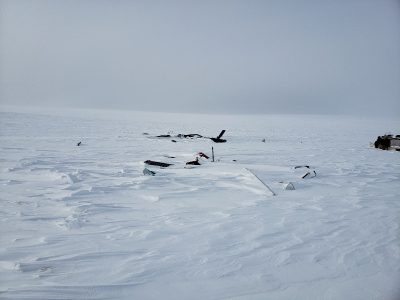
In conjunction with the release of an accident investigation report on the fatal crash in 2021 of an Airbus AS350 helicopter in Nunavut, the Transportation Safety Board (TSB) issued four recommendations to Transport Canada (TC) for the improvement of safety measures to prevent accidents resulting from loss of visual reference to terrain.
The Great Slave Lake helicopter was flying to Resolute Bay, Nunavut, on April 25, 2021, when it collided with terrain, killing all three persons on board (the pilot, an AME and a biologist). The TSB determined that when the helicopter approached the highest point on Griffith Island, a combination of snow-covered and featureless terrain and a likely snow squall led to whiteout conditions, causing the pilot to lose visual reference to the ground – in effect, he flew into Instrument Visual Conditions (IMC).
“For more than 30 years, the TSB has been calling for the implementation of safety measures to mitigate the risks that persist in helicopter reduced visibility operations,” TSB chairwoman Kathy Fox said. “These are systemic safety issues that continue to put at risk the lives of thousands of pilots and passengers every year.”
The recommendations are:
- Require commercial helicopter operators to ensure pilots possess the skills necessary to recover from inadvertent flight into IMC.
- Require commercial helicopter operators to implement technology that will assist pilots with the avoidance of, and recovery from, inadvertent flight into IMC.
- Require private and commercial operators conducting single-pilot operations to develop standard operating procedures based on corporate knowledge and industry best practices to support pilot decision-making.
- Enhance the requirements for helicopter operators that conduct reduced-visibility operations in uncontrolled airspace to ensure that pilots have an acceptable level of protection against inadvertent flight into IMC accidents.
TSB’s statement went on to say that the risks to pilots flying in flat light or whiteout conditions are well known and that the TSB has identified loss of spatial awareness in 13 accident investigations between 2010 and 2018 and has issued 10 recommendations to TC related to this issue.
